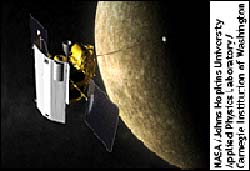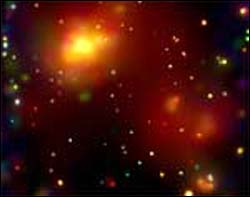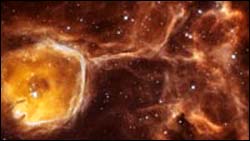This area deals with the fundamental laws and building blocks of nature and how they interact, the properties and the behavior of matter, and research into space and time and their structures.
innovations-report provides in-depth reports and articles on subjects such as astrophysics, laser technologies, nuclear, quantum, particle and solid-state physics, nanotechnologies, planetary research and findings (Mars, Venus) and developments related to the Hubble Telescope.

VLT Observations of Beryllium in Two Old Stars Clock the Beginnings
Observations by an international team of astronomers with the UVES spectrometer on ESO’s Very Large Telescope at the Paranal Observatory (Chile) have thrown new light on the earliest epoch of the Milky Way galaxy.
The first-ever measurement of the Beryllium content in two stars in a globular cluster (NGC 6397) – pushing current astronomical technology towards the limit – has made it possible to study the ea

Two new moons orbiting between Mimas and Enceladus, discovered by the NASA/ESA/ASI Cassini-Huygens spacecraft, may be the smallest bodies so far seen around the ringed planet.
The moons are approximately three kilometres and four kilometres across. Located 194 000 kilometres and 211 000 kilometres from the planet’s centre, the moons are between the orbits of two other Saturnian moons, Mimas and Enceladus. They are provisionally named S/2004 S1 and S/2004 S2, bringing the current

The first spacecraft intended to orbit Mercury was launched on Aug. 3, 2004, carrying an instrument for mapping the composition of the planet’s crust that was calibrated with a novel procedure at the National Institute of Standards and Technology (NIST). The procedure, using NIST-produced, high-energy gamma rays, enabled the device to be prepared for the same intense radiation levels typically produced in outer space.
Mercury is a rocky planet like the Earth but smaller, denser and

A NASA Chandra X-ray Observatory image has revealed a complex of several intergalactic hot gas clouds in the process of merging. The superb Chandra spatial resolution made it possible to distinguish individual galaxies from the massive clouds of hot gas. One of the clouds, which envelopes hundreds of galaxies, has an extraordinarily low concentration of iron atoms, indicating that it is in the very early stages of cluster evolution.
“We may be seeing hot intergalactic gas in a

Network could operate 100 times faster
Canadian researchers have shown that nanotechnology can be used to pave the way to a supercharged Internet based entirely on light. The discovery could lead to a network 100 times faster than today’s.
In a study published today in Nano Letters, Professor Ted Sargent and colleagues advance the use of one laser beam to direct another with unprecedented control, a featured needed inside future fibre-optic networks. “This finding showc

Real geodes are handball-sized, hollow rocks that start out as bubbles in volcanic or sedimentary rock. Only when these inconspicuous round rocks are split in half by a geologist, do we get a chance to appreciate the inside of the rock cavity that is lined with crystals. In the case of Hubble’s 35 light-year diameter ’celestial geode’ the transparency of its bubble-like cavity of interstellar gas and dust reveals the treasures of its interior.
The object, called N44